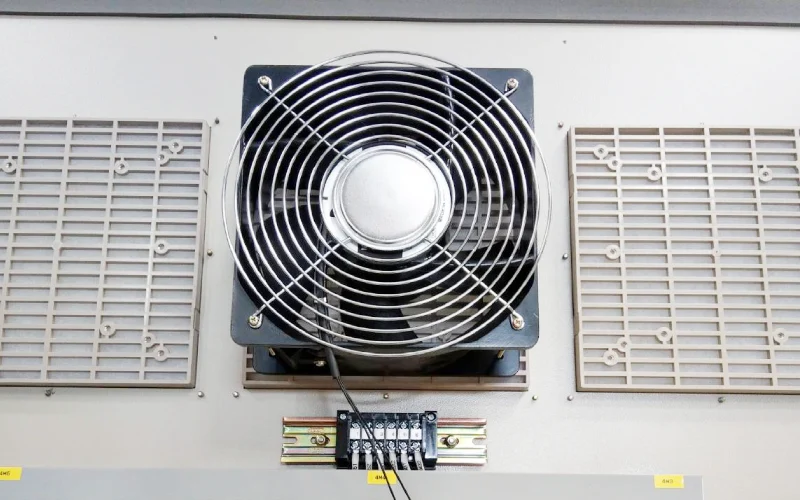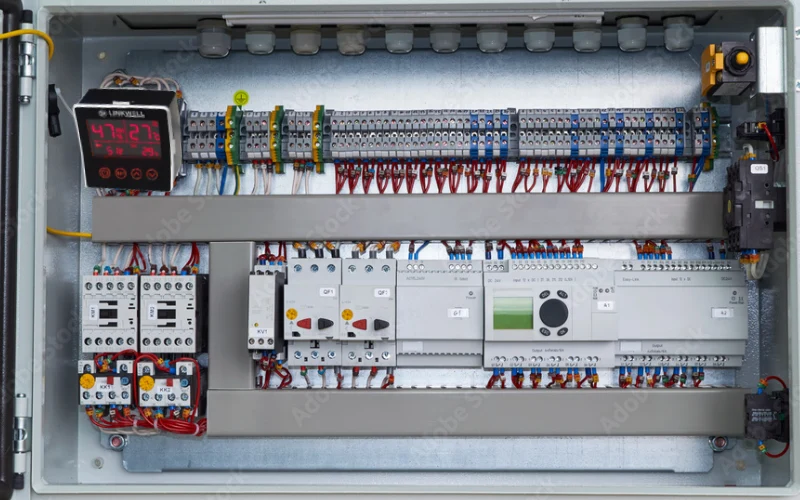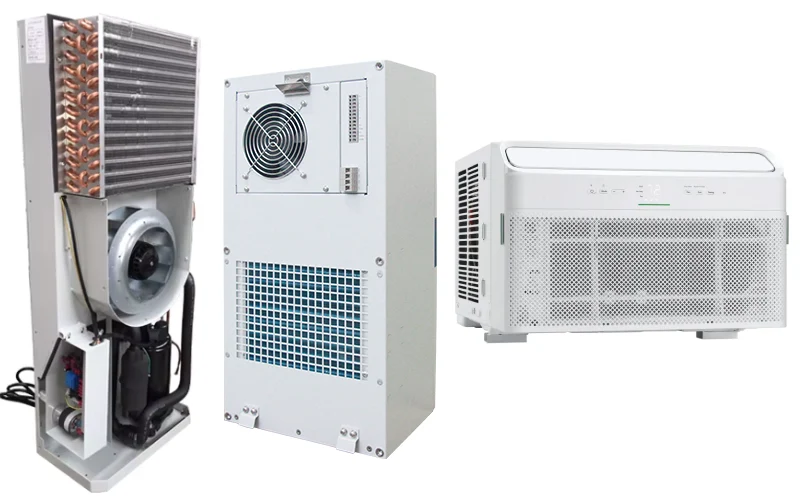If you work with electrical or control cabinets, you’ll want to know the standard aircon voltage options for enclosure air conditioners in 2025. Most units run on 12V or 24V DC, or 115V, 230V, 380/400V, and 460V AC. Choosing the right voltage keeps your equipment safe, efficient, and compliant with key standards like UL and CE. Here’s a quick look at what matters:
| Aspect | Details |
|---|---|
| Operating Voltage | DC: 12V, 24V; AC: 115V, 230V, 380/400V, 460V (50, 60, 400 Hz) |
| Standards | IEC, CE, CSA, UL |
| Phase | Single-phase (light duty), Three-phase (industrial use) |
You can count on Linkwell for reliable cabinet air conditioners and outdoor enclosures that meet these requirements.
Key Takeaways
- Choose the right aircon voltage based on your enclosure size and cooling needs to keep equipment safe and efficient.
- Match your air conditioner voltage to your available power supply, whether single-phase, three-phase, AC, or DC, for easy installation and reliability.
- Follow industry standards like UL, CE, and NEMA to ensure your air conditioner meets safety and environmental requirements.
- Use dedicated circuits, surge protection, and proper wiring to protect your system and prevent electrical issues.
- Perform regular maintenance by cleaning filters, checking wiring, and inspecting for overheating to keep your air conditioner running smoothly.
Aircon Voltage Options
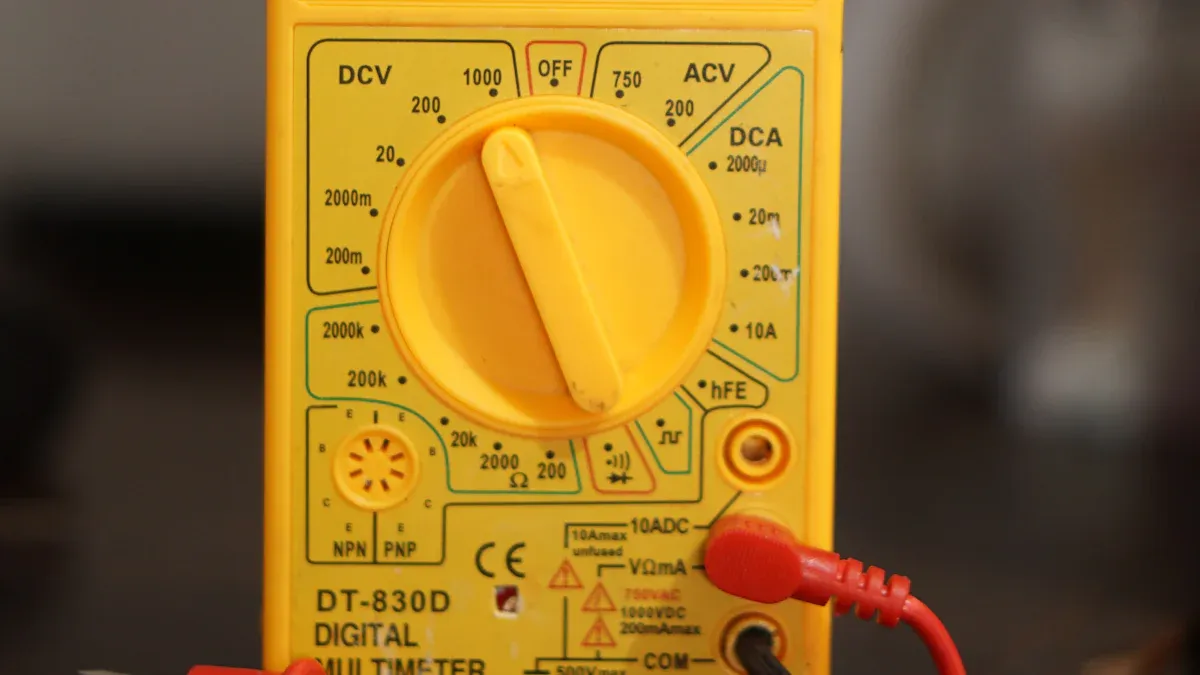
When you choose an enclosure air conditioner for your electrical or control cabinet, you need to understand the aircon voltage options available in 2025. The right voltage keeps your equipment running smoothly and safely. Let’s break down the choices so you can pick what works best for your setup.
AC Voltage Choices
Most enclosure air conditioners use AC voltage. You’ll see common ratings like 115V, 120V, 220V, 230V, 380V, 400V, and 460V. These options fit standard power grids in factories, offices, and industrial sites. AC units are popular because they offer strong cooling power and easy installation.
Here’s a quick look at the pros and cons:
| Feature / Aspect | AC Cabinet Air Conditioners |
|---|---|
| Cooling Power | High capacity (12,000–24,000 BTU), great for large spaces |
| Energy Efficiency | Lower efficiency with fixed-speed compressors; higher energy use |
| Upfront Cost | Lower initial cost; works with standard power grids |
| Maintenance Needs | Needs regular cleaning and servicing |
| Environmental Impact | Higher carbon footprint due to grid electricity |
| Best Use Cases | Steady grid power, large cooling demands |
| Performance | Fixed-speed compressors cycle on/off, causing temperature swings and more power use |
| Advanced Technology | Inverter AC models improve efficiency and reduce costs |
Newer inverter AC models help narrow the gap in energy efficiency. If you want reliable cooling for a big electrical cabinet or control panel, AC aircon voltage is a solid choice.
DC Voltage Choices
DC voltage air conditioners are gaining popularity, especially for outdoor enclosures and mobile setups. The most common ratings are 12V, 24V, and 48V DC. You’ll find these units in telecom cabinets, battery storage, electric vehicles, and remote installations.
Why pick DC aircon voltage? Here are some reasons:
- You get stable and efficient cooling for telecom and battery cabinets.
- DC units work well in off-grid living, RVs, and mobile clinics.
- They suit aerospace, military, and OEM custom integrations.
- 24VDC models are lighter and easier to maintain, perfect for industrial and mobile applications.
- 48VDC units are preferred for outdoor telecom and industrial sites needing reliable cooling.
DC air conditioners often feature maintenance-free operation and energy-saving controls. If your enclosure sits in a remote spot or runs on solar power, DC aircon voltage is a smart solution.
Single vs Three-Phase
You’ll need to decide between single-phase and three-phase aircon voltage. Single-phase systems are simple and cost-effective. They fit small electrical cabinets, control panels, and residential setups. Three-phase systems deliver more power and efficiency, making them ideal for large industrial enclosures.
Check out this comparison:
| Aspect | Single-Phase Voltage Option | Three-Phase Voltage Option |
|---|---|---|
| Efficiency | Efficient for low loads; less so for high loads | More efficient for high power and long distances |
| Size and Weight | Smaller, lighter, fits compact enclosures | Larger, heavier, needs bigger enclosures |
| Suitability | Great for homes, small offices, retail shops | Best for factories, plants, data centers |
| Power Delivery | Single AC waveform, good for low power needs | Continuous, balanced power for heavy machinery |
| Cost | Lower purchase and installation cost | Higher upfront cost, but better for big loads |
| Load Distribution | Less balanced, risk of overload | Balanced, stable, reduces overload risk |
| Maintenance | Easier, fewer failures | Durable, reliable in harsh environments |
Three-phase aircon voltage gives you stable power and efficiency for large control cabinets and industrial sites. Single-phase works well for smaller enclosures with lighter loads.
Tip: Linkwell offers cabinet air conditioners with both AC and DC voltage options, including custom voltages for special setups. Their products carry ISO 9001, CE, and RoHS certifications, so you know you’re getting safe and reliable cooling for your electrical or control cabinet.
Wide voltage adaptation technology now lets you run air conditioners across a broad range of voltages, like 115V, 220-240V, and 400V. This means you get stable performance and fewer failures, no matter where your enclosure sits.
Choosing Voltage
Selecting the right aircon voltage for your enclosure air conditioner can feel tricky, but you can break it down into three main steps. Let’s walk through what you need to consider so your electrical cabinet or control cabinet stays cool, safe, and efficient.
Enclosure Size & Load
Start by looking at the size of your enclosure and the amount of heat your equipment generates. Bigger cabinets or those packed with high-power electronics need more cooling power. That means you’ll often need a higher aircon voltage to handle the load.
- Small enclosures (like compact control panels or telecom boxes) usually work well with lower voltage units, such as 12V, 24V DC, or 115V AC. These are easy to install and don’t require heavy wiring.
- Medium to large cabinets (like industrial control cabinets or power distribution panels) often need 230V, 400V, or even 480V AC. These higher voltages support bigger cooling capacities and keep your system running smoothly.
Tip: If your cabinet sits outdoors or in a hot factory, always size up your cooling. More heat means you need more voltage and a stronger air conditioner.
Power Supply Match
Next, check what kind of power you have available at your site. Matching your aircon voltage to your existing supply makes installation easier and safer.
- Single-phase power is common in homes, small offices, and light-duty setups. You’ll usually see 115V or 230V AC units here.
- Three-phase power is standard in factories, plants, and large facilities. These setups can handle 380V, 400V, or 480V AC, perfect for heavy-duty cooling.
- DC power (12V, 24V, 48V) is popular for telecom, battery storage, and solar-powered enclosures. DC air conditioners are lighter and work well in remote or mobile applications.
If you’re not sure which to pick, look at your main breaker panel or ask your electrician. Choosing the right voltage keeps your system safe and avoids costly rewiring.
Note: Linkwell offers cabinet air conditioners in a wide range of voltages—AC and DC—so you can always find a model that fits your power setup. Their flexible mounting options (side, top, or door) make installation a breeze, even in tight spaces.
Application Needs
Every application has its own requirements. The right aircon voltage depends on where and how you use your enclosure air conditioner. Here’s a quick table to help you see how different needs affect your choice:
| Application-Specific Requirement | Influence on Aircon Voltage Choice |
|---|---|
| Enclosure NEMA Rating (e.g., 4, 4X) | Outdoor-rated units often require higher voltages such as 480V to handle environmental protection and power needs. |
| Environmental Conditions (corrosive, washdown) | Units for harsh environments may have specific voltage options for durability and compliance. |
| Available Power Supply (AC/DC, phase) | Voltage choice depends on whether single-phase, three-phase AC, or DC power is available. |
| Mounting Constraints (space limitations) | Smaller enclosures may use lower voltage or specialized units compatible with available power. |
| Cooling Capacity Needs | Higher capacity outdoor units may require higher voltage inputs (480V) for sufficient power. |
| Application Requirements (hazardous locations) | Hazardous location units may have specific voltage and power supply needs. |
| Indoor vs Outdoor Use | Indoor units often use lower voltages; outdoor units may require robust 480V options. |
| Compliance (UL/NEMA standards) | Voltage options must align with certifications and standards for safety and reliability. |
For example, if you need to cool a cabinet in a corrosive or washdown area, you might need a higher voltage unit built for tough environments. If you’re working with a telecom box in a remote spot, a 48V DC air conditioner could be your best bet.
Thermoelectric coolers also give you flexibility. You can choose from DC voltages (12, 24, 48, or even 250 VDC) for lighter, mobile setups, or AC voltages (100-240 VAC) for worldwide compatibility. Larger industrial applications, like power generation or crane equipment, often use three-phase input voltage to meet higher power demands.
Remember: Always check your application’s standards and certifications. Linkwell’s air conditioners meet UL, CE, and NEMA requirements, so you can trust their products for both indoor and outdoor use.
In summary:
Think about your enclosure size, available power, and where you’ll use your air conditioner. Linkwell’s wide range of aircon voltage options and mounting styles means you can always find the right fit for your project—no matter how unique your needs.
Regulations 2025
Standards & Codes
When you pick an enclosure air conditioner, you need to know which standards matter in 2025. These standards make sure your equipment stays safe, reliable, and legal. Here’s a quick table to help you see what each standard covers:
| Standard/Rating | Scope/Application | Examples for Enclosure Air Conditioners |
|---|---|---|
| UL Standards | North American safety, fire resistance, durability | UL certification, Type 3R/4X, IP54/IP66 |
| IEC Standards | International safety, voltage limits, ingress protection | Voltage ratings, IP codes |
| NEMA Ratings | U.S. environmental protection, corrosion, ice resistance | NEMA 4X for harsh environments |
| IP Ratings | Dust and water protection | IP54, IP66, IP69 for outdoor use |
| CE Marking | European safety, health, and environmental compliance | Required for EU markets |
You’ll see these marks on most quality air conditioners for electrical and control cabinets. They show that the product passed strict tests for voltage, safety, and environmental protection.
Industry Compliance
You might wonder why aircon voltage standards change from place to place. Each region has its own rules and power systems. Here’s what you need to know:
- North America uses 120V/60Hz as the standard.
- Europe goes with 230V/50Hz.
- Asia has different standards. Japan uses 100V/50Hz or 100V/60Hz. China uses 220V/50Hz.
- Each region requires its own safety marks, like UL in North America and CE in Europe.
- Manufacturers design air conditioners with wide voltage ranges and automatic frequency adjustment. This helps you use the same unit in different countries.
- Certifications like UL, CE, FCC, and RoHS make sure your equipment is safe and efficient.
If you want to install an enclosure air conditioner in a new country, always check the local voltage and certification needs.
Future-Proofing
You want your investment to last. That means choosing products that meet today’s standards and can handle tomorrow’s changes. Linkwell makes this easy for you. Their air conditioners and outdoor enclosures meet IEC 60529 and UL 60529 standards. They pass tests for dust and water resistance (IP66/IP67). Linkwell’s AC modules are IEC and UL certified, and they comply with NEMA 4X for harsh environments. You also get telecom-grade durability and ANSI/TIA-942-A compliance for telecom cabinets.
Tip: When you choose Linkwell, you get products that are ready for global use. You don’t have to worry about changing regulations or voltage requirements. You get peace of mind and reliable cooling for your electrical and control cabinets.
Installation & Safety
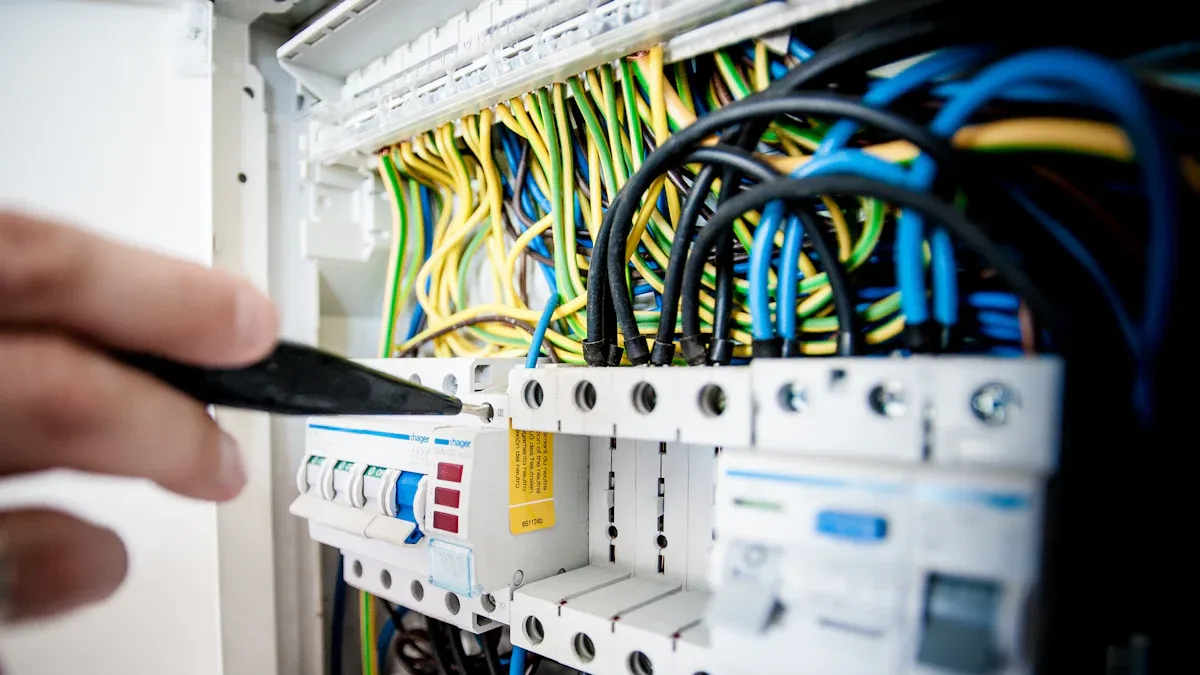
Wiring & Protection
Getting your wiring right is the first step to safe and reliable aircon voltage operation. You want to route wires away from sharp edges and heat sources. Use cable clips or clamps to keep wires secure, but don’t over-tighten. Always separate low-voltage and high-voltage lines. The National Electric Code recommends keeping at least 8 inches between unshielded low-voltage wires and standard high-voltage wiring. Shielded wires can run closer, but never share the same holes. For outdoor enclosures, pick weatherproof cables and sealed junction boxes. Add surge protection devices at your electrical panel and entry points. This helps absorb voltage spikes and keeps your equipment safe. If you install your air conditioner in a cabinet or control panel, make sure any openings are sealed to prevent moisture and dust from getting in.
Tip: Linkwell’s cabinet air conditioners come with easy-mount kits and clear wiring diagrams. You get support from their technical team if you need help with installation or choosing the right protection devices.
Maintenance Tips
Regular maintenance keeps your enclosure air conditioner running smoothly. Clean the cabinet and control panel to remove dust and debris. Check wiring for loose connections or damaged insulation. Look for signs of overheating, like discolored wires. Make sure ventilation openings and filters stay clear. Only let trained personnel work on your unit, and always shut off power before starting. Use lockout/tagout procedures for extra safety. Schedule inspections to catch problems early and keep your aircon voltage stable.
| Maintenance Task | How Often | What to Look For |
|---|---|---|
| Clean filters and vents | Monthly | Dust, blockages |
| Inspect wiring | Quarterly | Loose, corroded, or damaged |
| Check for overheating | Quarterly | Discolored wires, burnt smell |
| Test surge protection | Annually | Proper function |
Troubleshooting Voltage
If your air conditioner acts up, start by checking the voltage at the compressor or motor terminals. It should match the rating on the unit’s nameplate, usually within ±10%. For three-phase units, make sure voltage and current are balanced between phases. Inspect breakers, fuses, and connections for corrosion or loose contacts. Use a multimeter or thermal imaging to spot trouble. If you find imbalances you can’t fix, call a qualified technician. Never ignore voltage problems—they can lead to motor burnout or fire risks.
Note: Linkwell offers 24/7 support and easy-to-follow troubleshooting guides. Their certified products help you avoid common voltage issues and keep your system safe.
You want your enclosure air conditioner to run safely and efficiently in 2025. Most units need 208/240 volts, with smaller models using 110/120 volts. Dedicated circuits and surge protection keep your system secure. Take a look at this chart to see how voltage requirements compare across different air conditioner types:
Linkwell’s certified solutions make it easy for you to meet UL, CE, and ISO standards. Their products go through tough testing and offer customization, fast delivery, and 24/7 support. Here’s a quick checklist to help you choose the right aircon voltage and stay compliant:
- Check your enclosure size and cooling load.
- Match voltage to your available power supply.
- Confirm compliance with UL, CE, NEMA, and IP ratings.
- Use dedicated circuits and surge protection.
- Choose Linkwell for reliable, certified air conditioners.
FAQ
What voltage should I choose for my enclosure air conditioner?
You want to match the air conditioner voltage to your available power supply. Most cabinets use 115V, 230V AC, or 24V, 48V DC. Always check your equipment specs before you buy.
Can I use a cabinet air conditioner outdoors?
Yes! You can install outdoor-rated units with IP54, IP65, or NEMA 4X protection. These models handle rain, dust, and extreme temperatures. Linkwell offers certified options for outdoor use.
How do air conditioner installations affect cabinet openings?
You need to seal any holes or cutouts made for air conditioner mounting. This keeps dust and moisture out. Use gaskets or weatherproof kits for best results.
Do I need special wiring for higher voltage air conditioners?
You should use dedicated circuits and surge protection for units above 230V. Always follow local electrical codes. Linkwell provides clear wiring diagrams to help you stay safe.
How often should I clean or check my cabinet air conditioner?
You should clean filters and vents monthly. Inspect wiring and connections every three months. Regular checks keep your system running smoothly and prevent overheating.
What are the different BTU types of cabinet air conditioners?
Aircon 6000 btu, aircon 800 btu, Moreover, we can customize the size to suit your needs, including shape and size.

